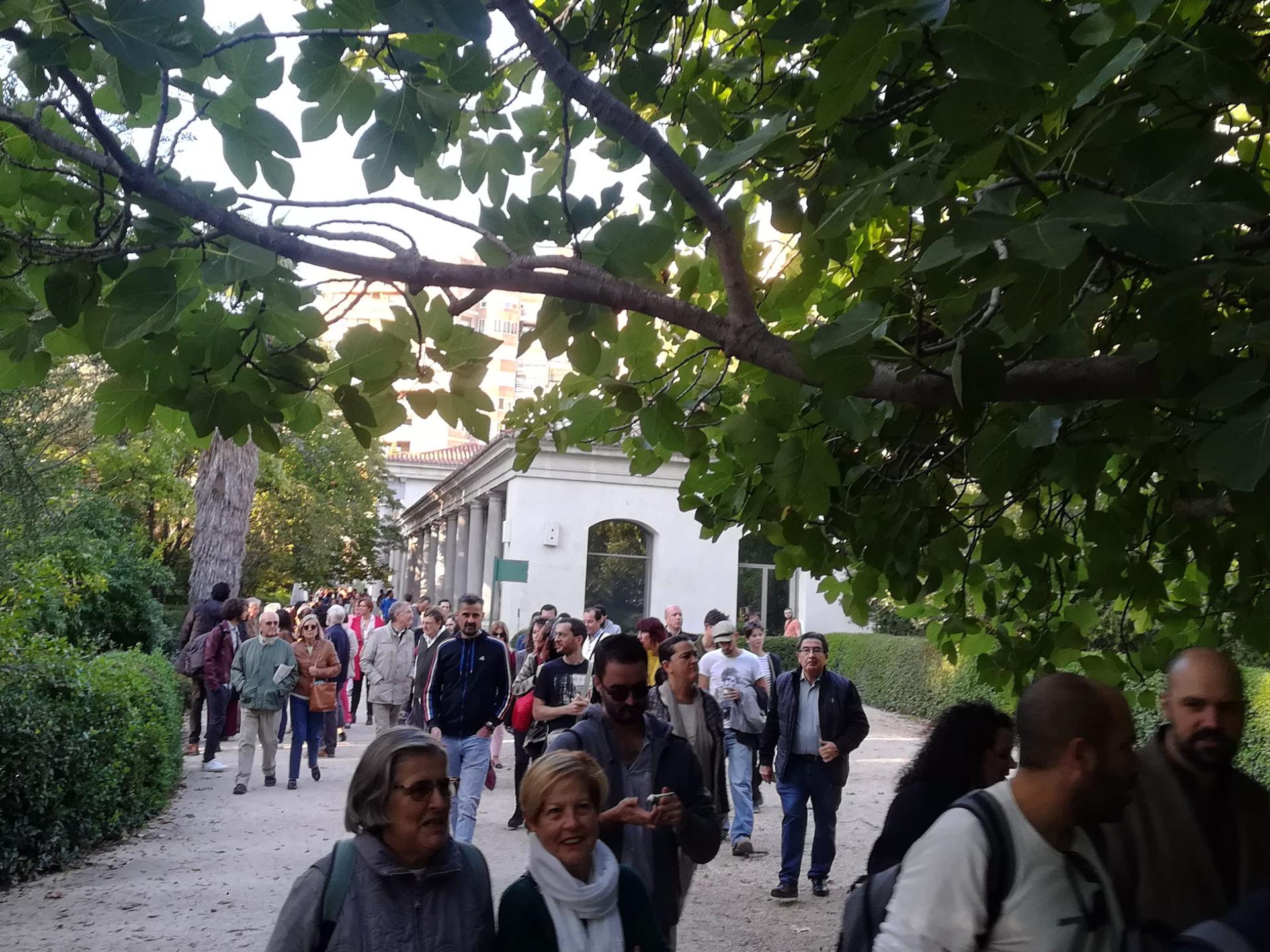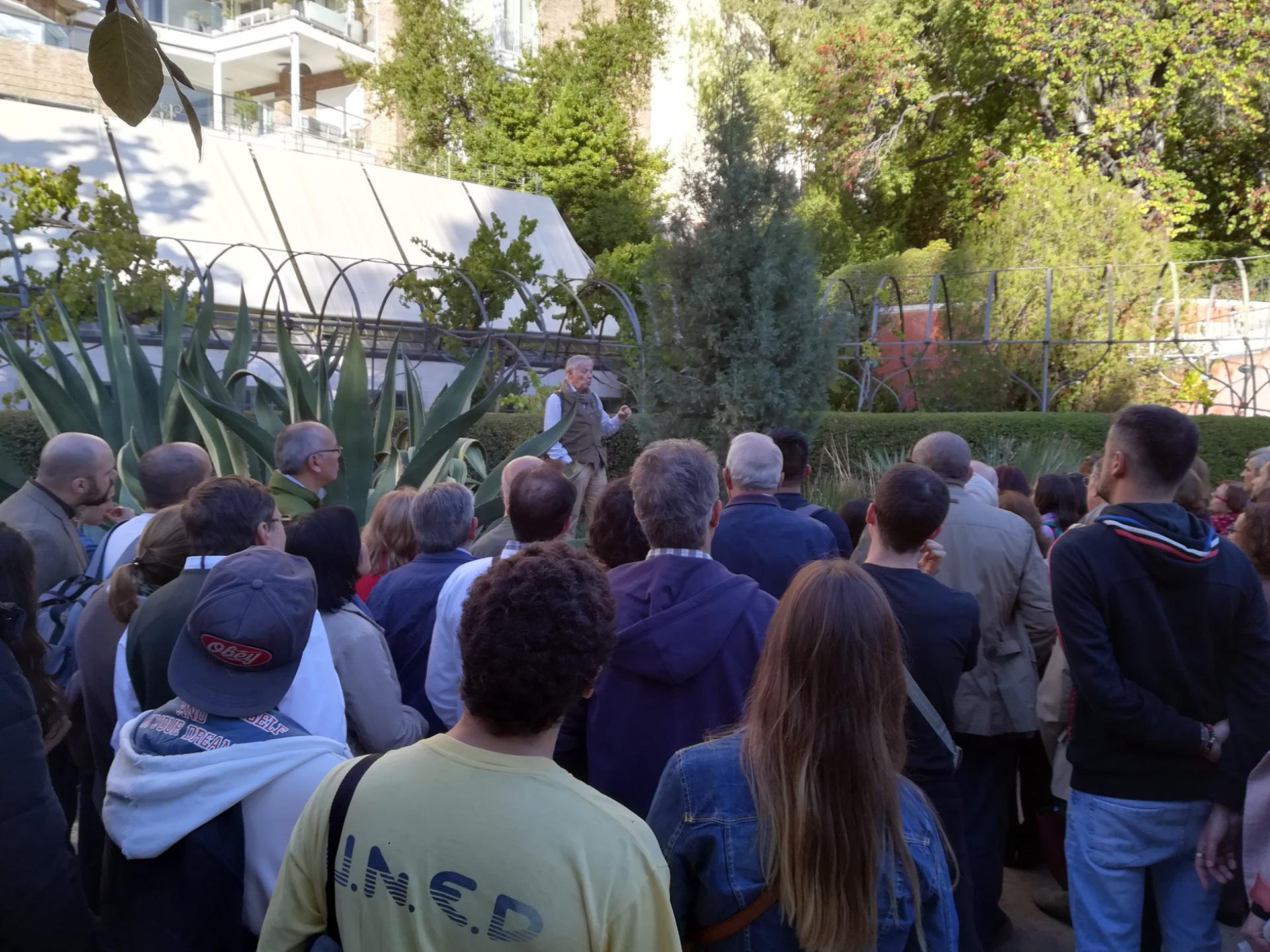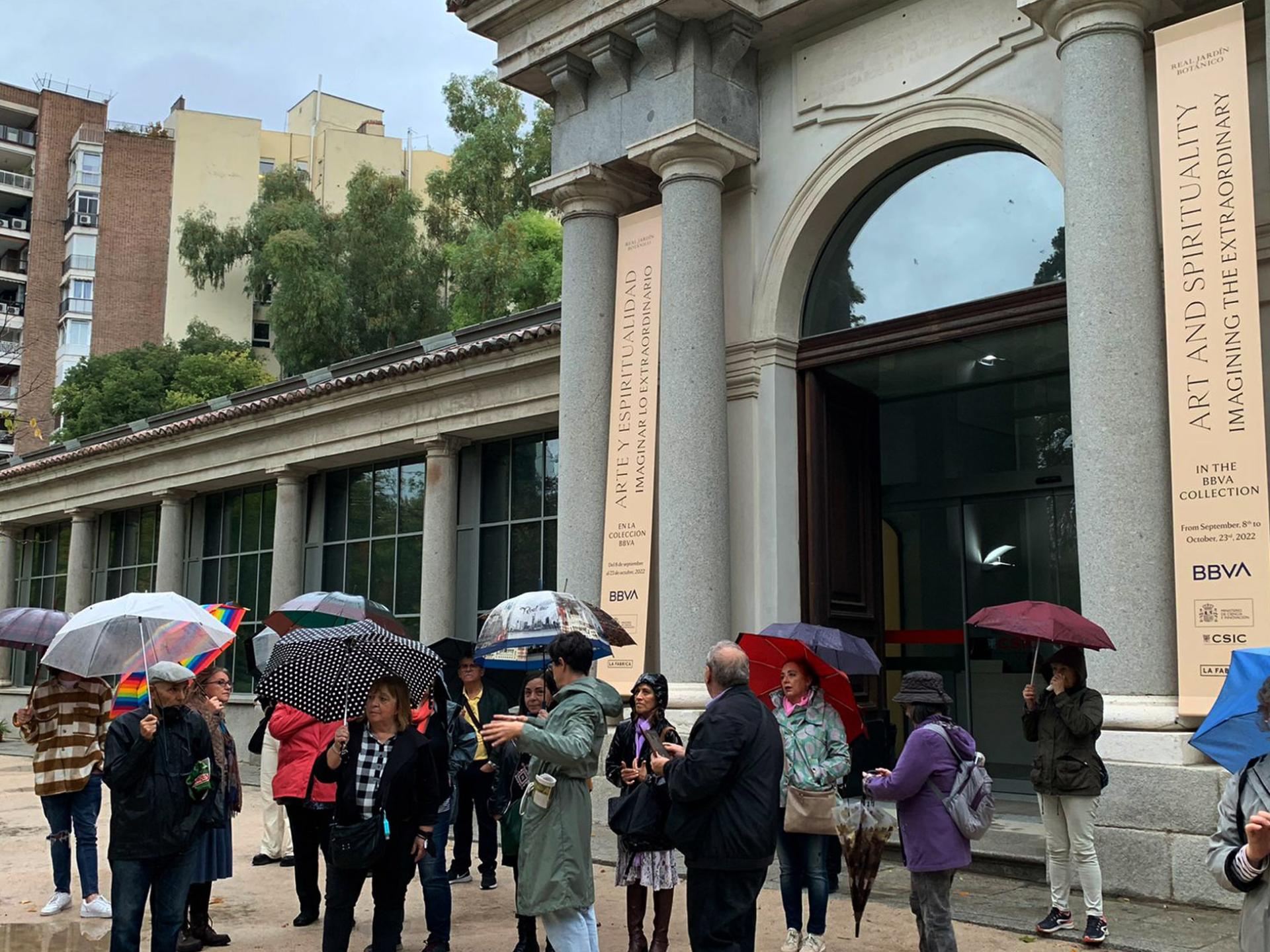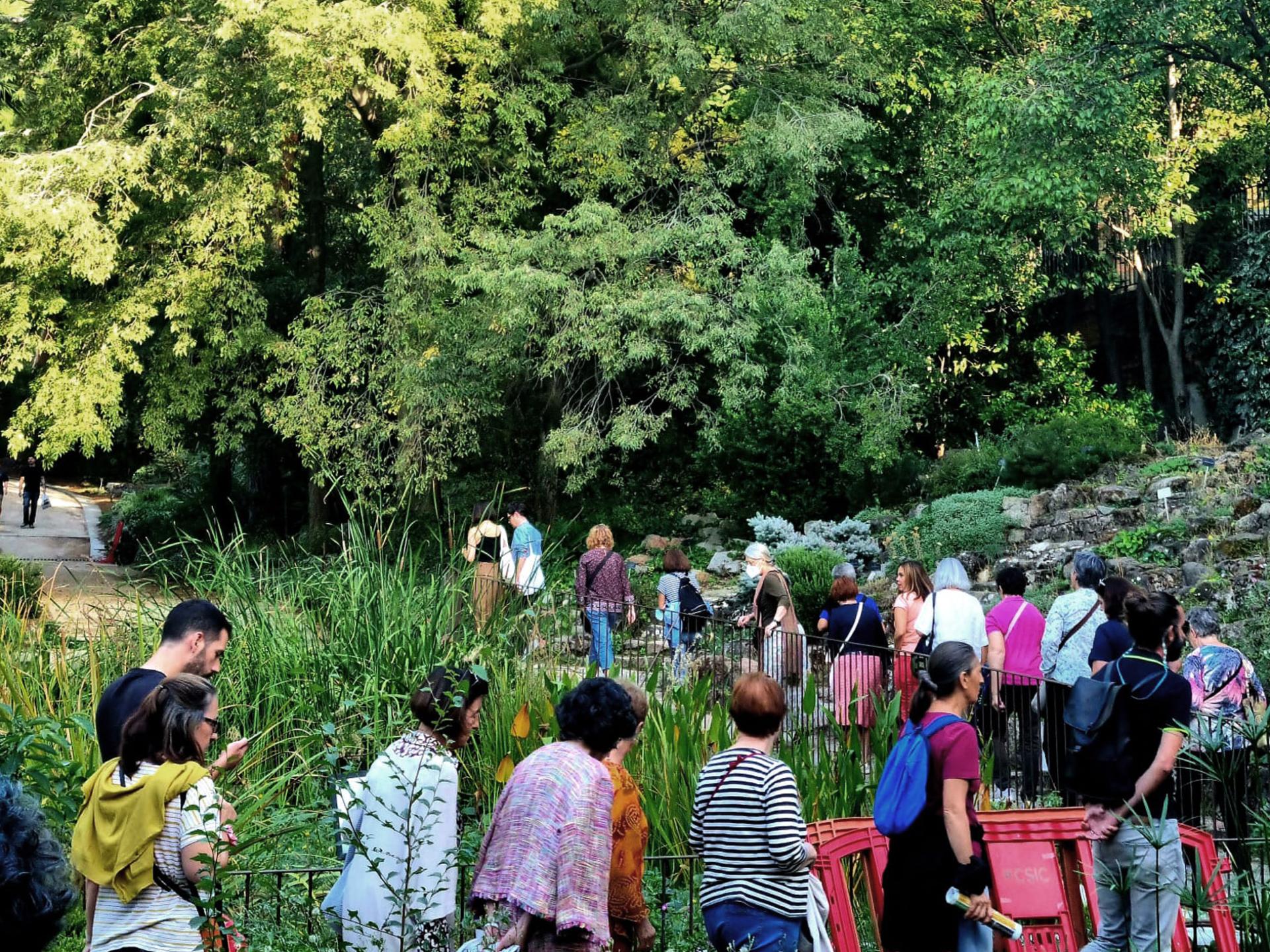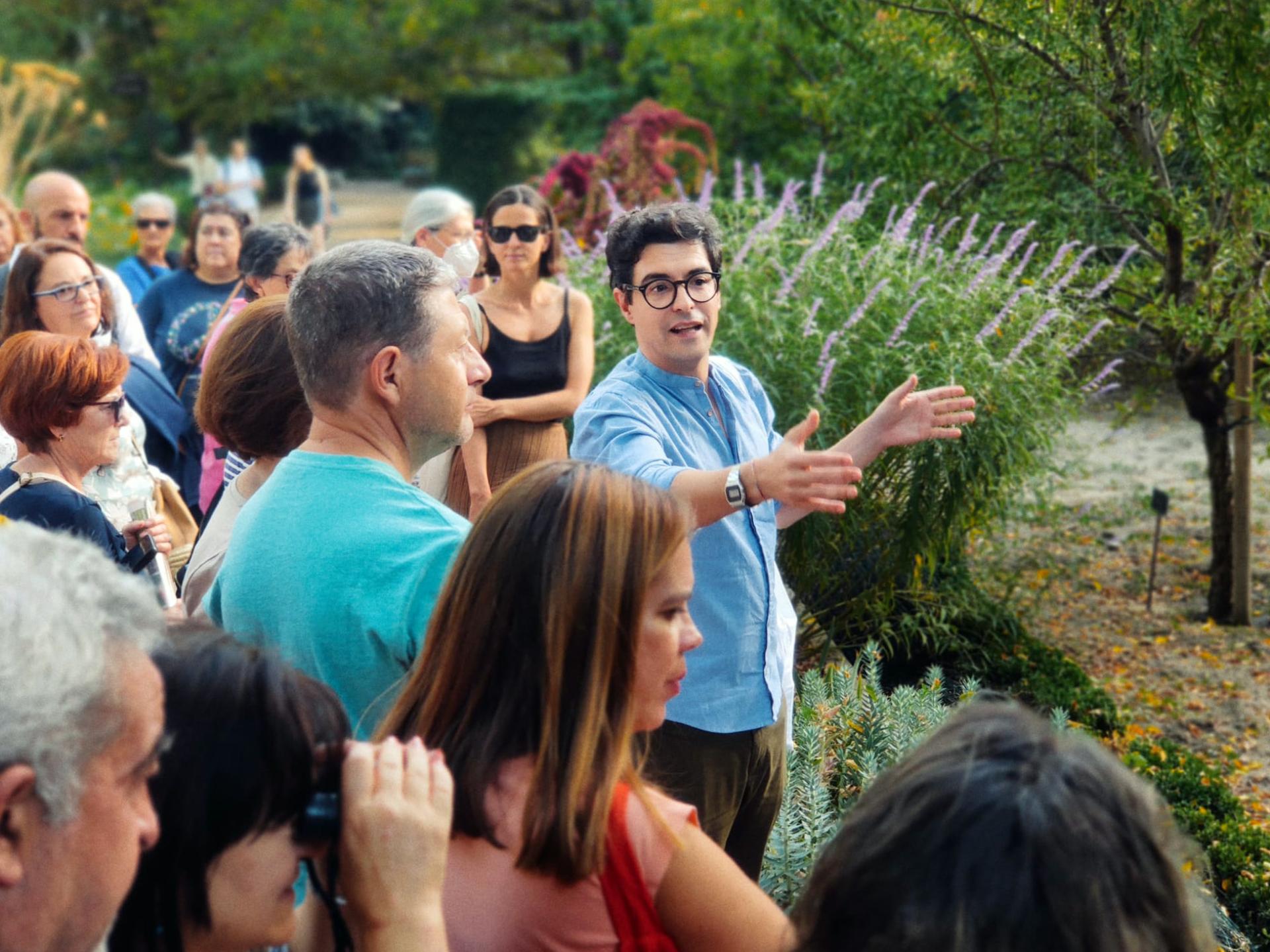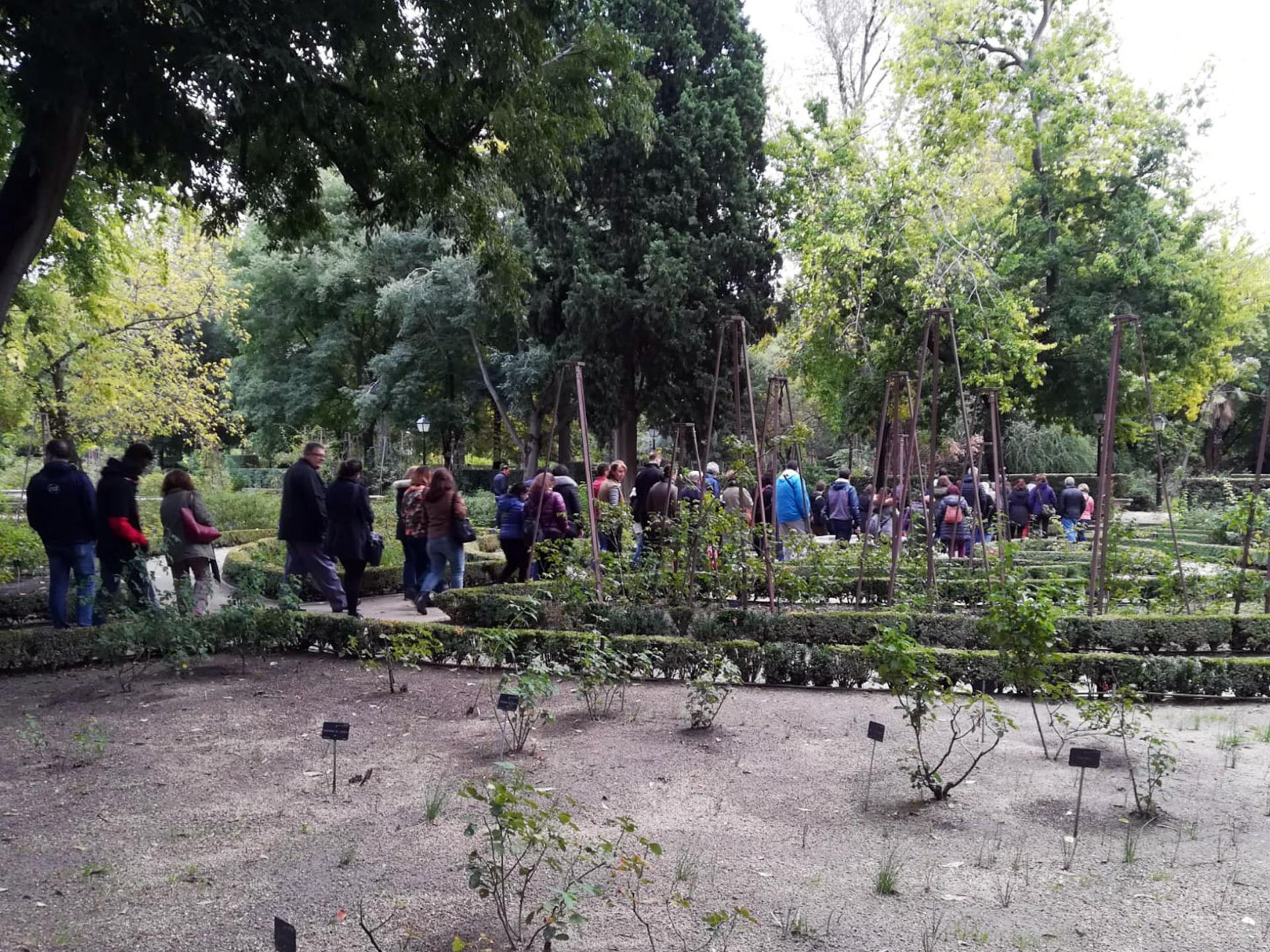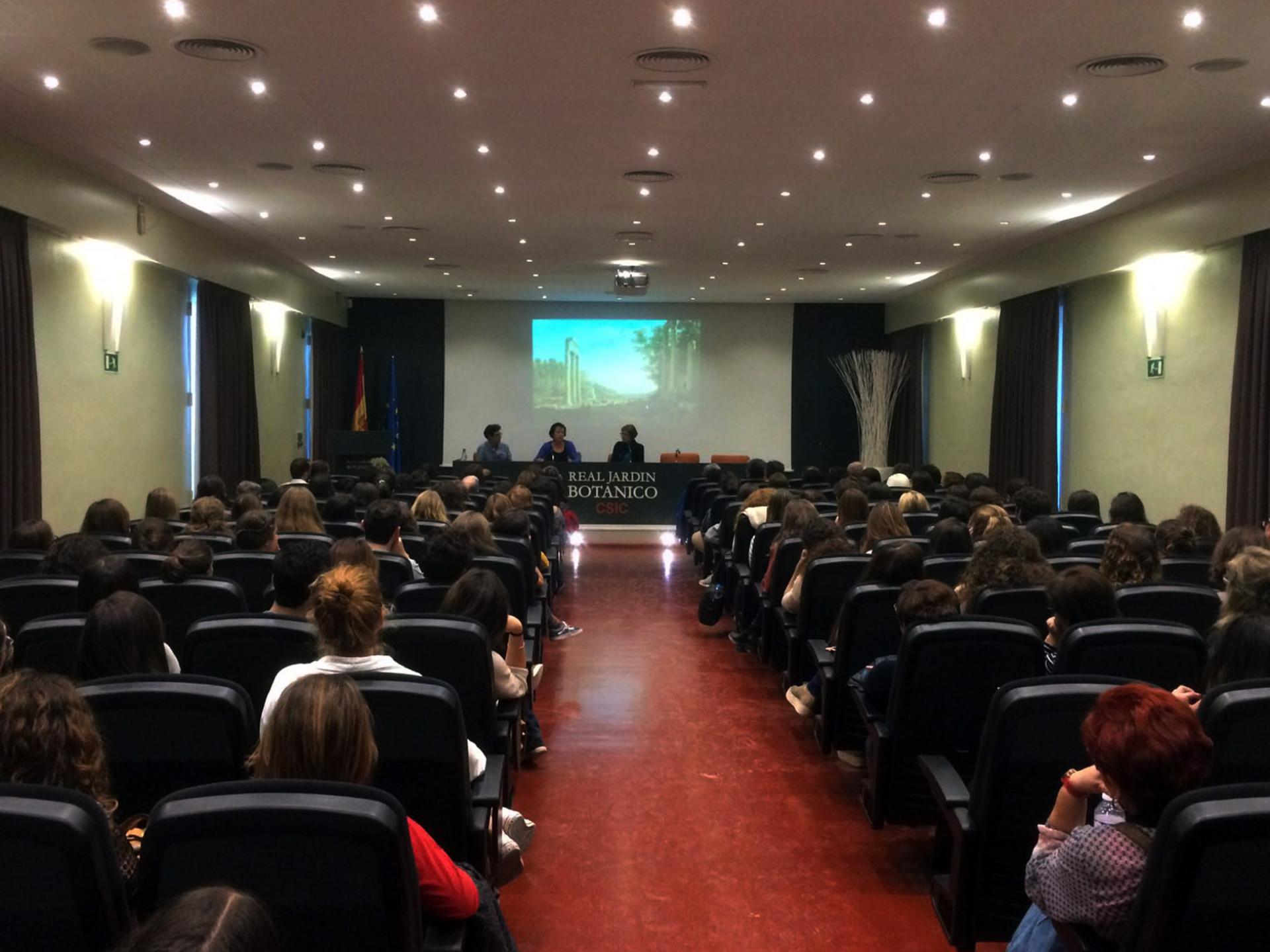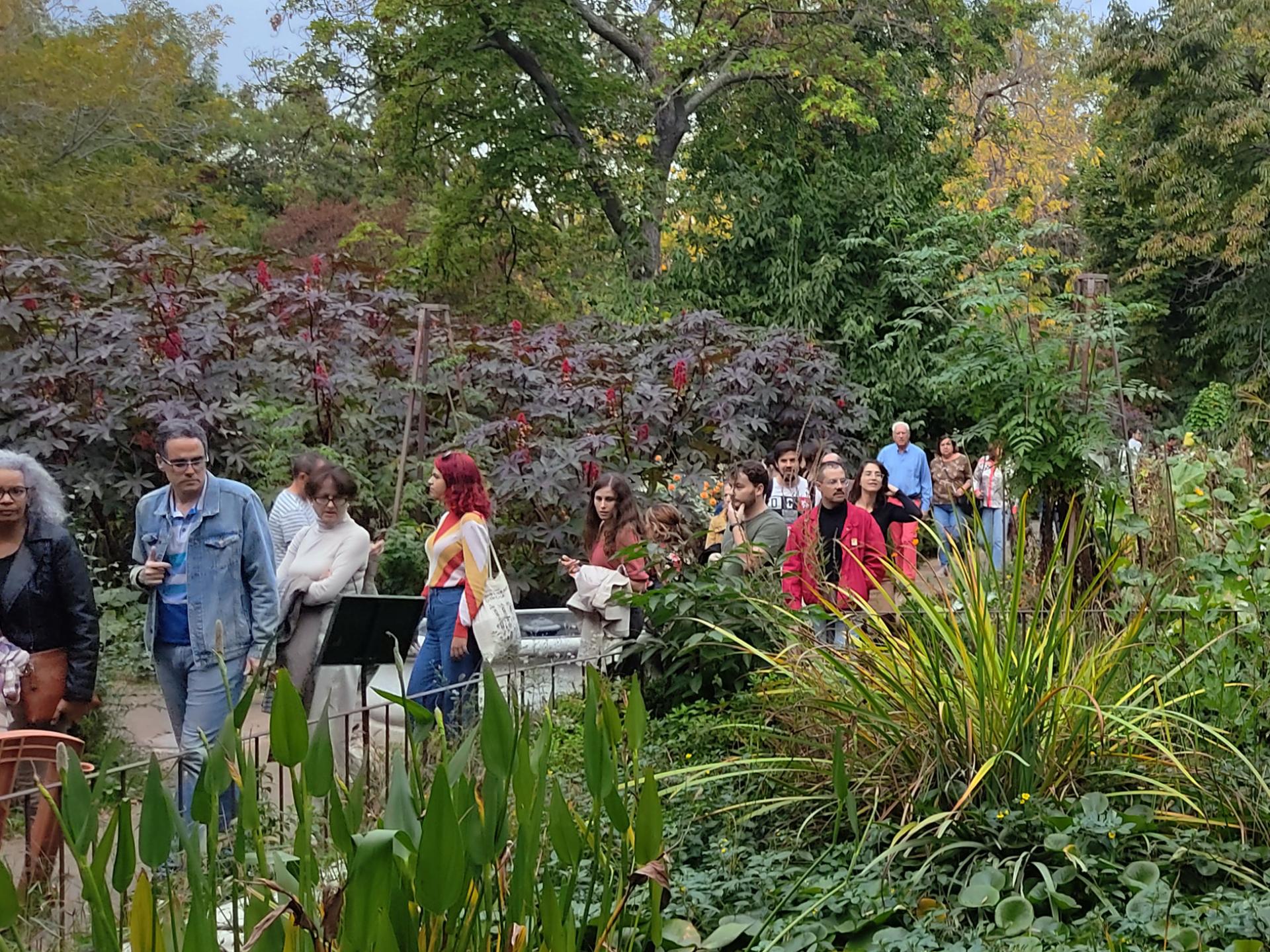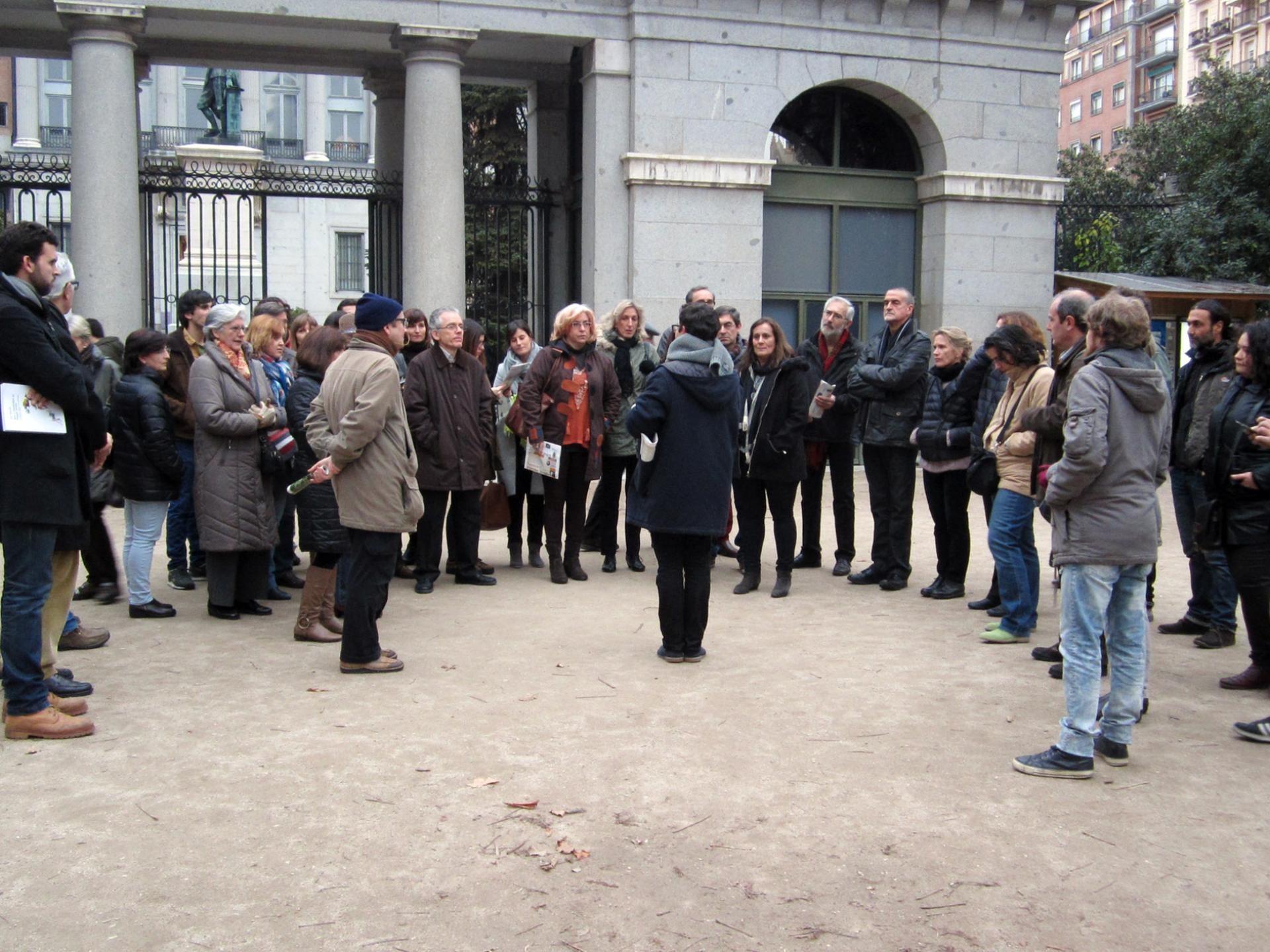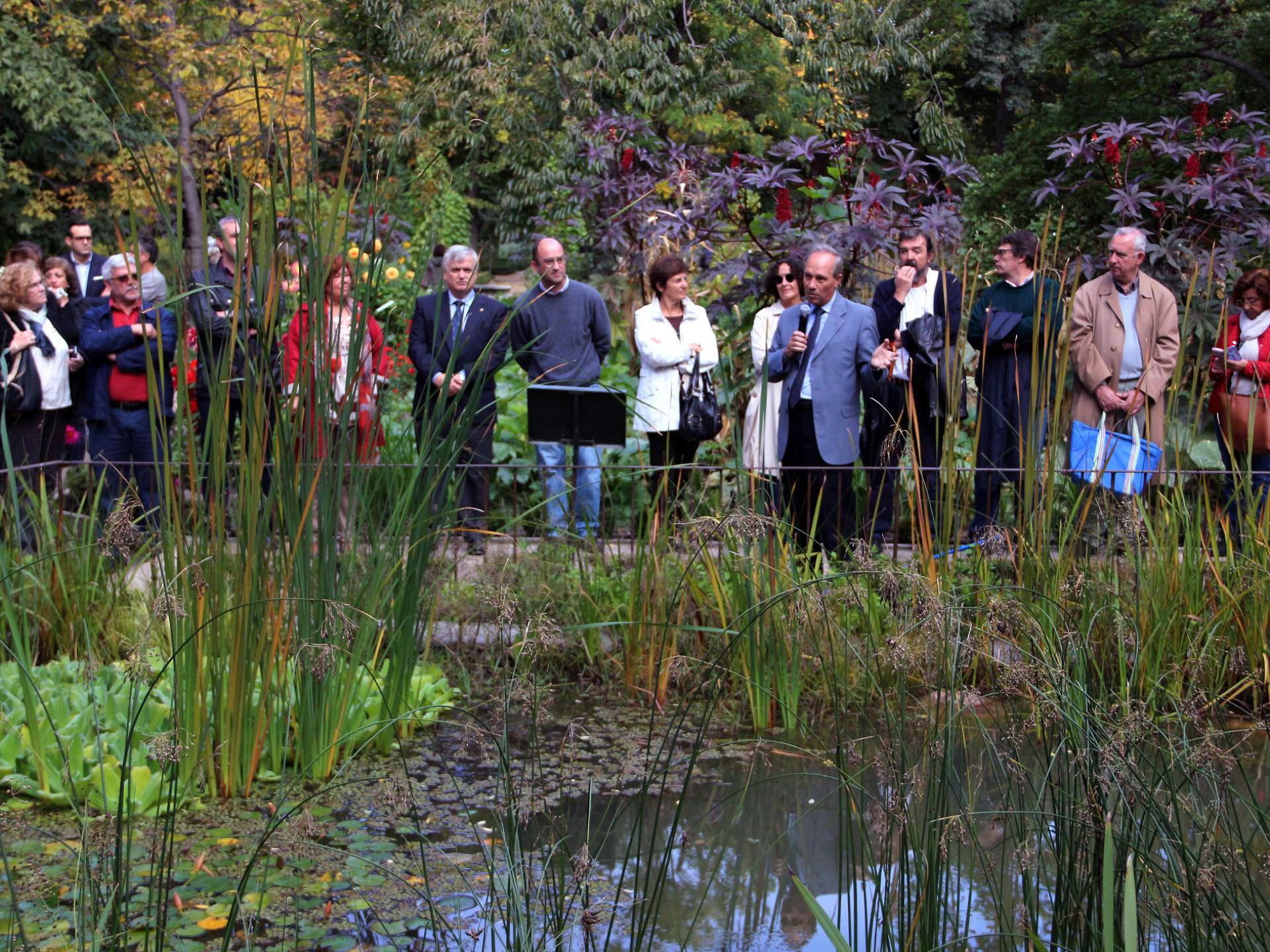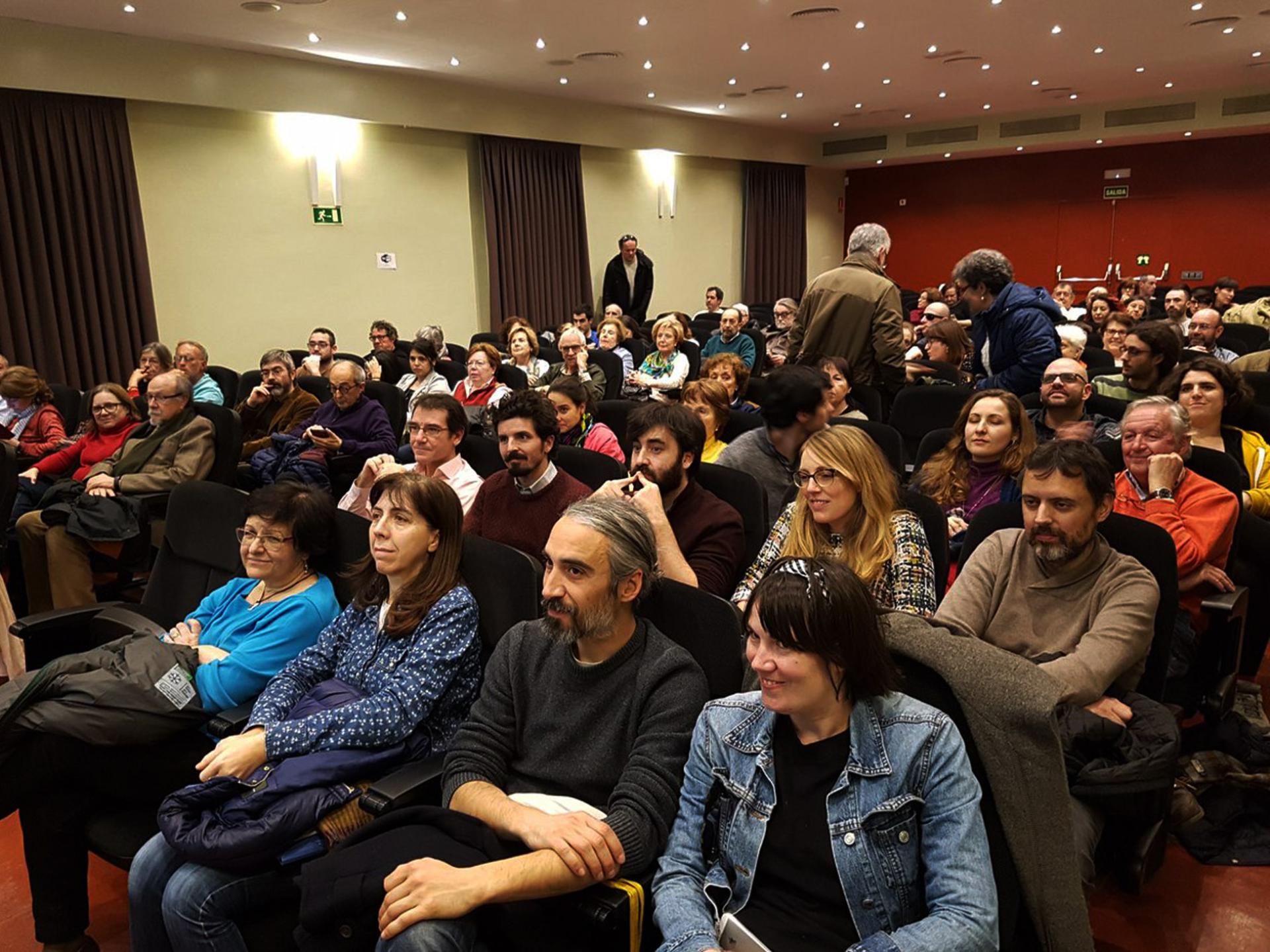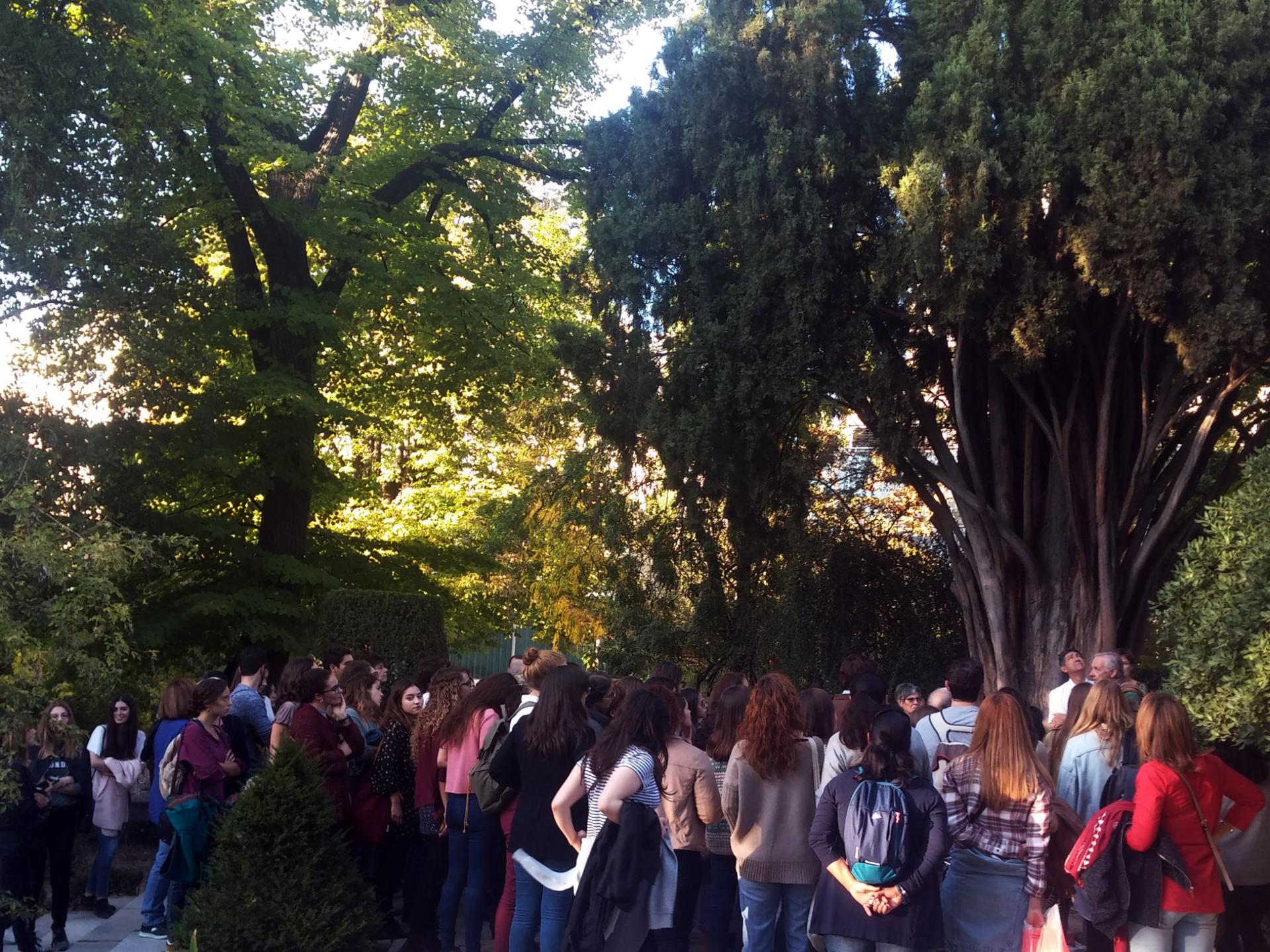CINEMA IN THE GARDEN
Basic information
Project Title
CINEMA IN THE GARDEN
Full project title
THROUGH THE CINEMA TO THE NATURE
Category
Reconnecting with nature
Project Description
Cinema in the garden is an outreach project that connects the population with nature and the environment. Through specific sessions with projections of fiction films and documentaries, we bring concepts and problems closer to a general public
that are more difficult to reach without cinema. Each session deals with a specific topic. It begins with a walk at the closing of the Royal Botanical Garden, and an
introduction with a guest expert and environment specialists.
that are more difficult to reach without cinema. Each session deals with a specific topic. It begins with a walk at the closing of the Royal Botanical Garden, and an
introduction with a guest expert and environment specialists.
Geographical Scope
Local
Project Region
Madrid, Spain
Urban or rural issues
Mainly urban
Physical or other transformations
It refers to other types of transformations (soft investment)
EU Programme or fund
No
Description of the project
Summary
Cinema, in its documentary format, is a tool that combines dissemination and pedagogy, just as in its fiction format it fuses culture and entertainment. Cinema, since its beginnings, has been characterised by being an art, the seventh art, but also a means of mass communication that reaches all audiences regardless of their social, economic or cultural status.
Cinema in the Garden' is a cycle organised by the Royal Botanical Garden (RJB) of the Spanish National Research Council (CSIC), through its Vice-Directorate of Scientific Culture, with the collaboration of the Spanish Association of Landscape Architecture (AEP). It has now been held for seven editions.
Now we want to give new impetus to the cycle that will take place during the month of October 2023 to welcome autumn, one of the most iconic and visited seasons at the RJB, with the organisation of four film sessions (documentary and/or fiction), one per week, which will include: an informative and thematic walk through the Botanical Garden, an in-person and online presentation of the film from a double scientific technical and artistic point of view, with the participation of the public, and the screening of the film.
Cinema in the Garden' is a cycle organised by the Royal Botanical Garden (RJB) of the Spanish National Research Council (CSIC), through its Vice-Directorate of Scientific Culture, with the collaboration of the Spanish Association of Landscape Architecture (AEP). It has now been held for seven editions.
Now we want to give new impetus to the cycle that will take place during the month of October 2023 to welcome autumn, one of the most iconic and visited seasons at the RJB, with the organisation of four film sessions (documentary and/or fiction), one per week, which will include: an informative and thematic walk through the Botanical Garden, an in-person and online presentation of the film from a double scientific technical and artistic point of view, with the participation of the public, and the screening of the film.
Key objectives for sustainability
The film series aims to bring the landscape closer to the public so that they can look at it again and value it. The objective shared by the two organizations behind the project, the Royal Botanical Garden of Madrid CSIC and the Spanish Association of Landscape Architects. It is to bring science and the study and defense of the landscape closer, using the cinema as a claim. A cultural leisure program, which invites the public to discover the natural and human environment at the hands of experts who are difficult to listen to in their day-to-day lives. We prioritize a scientific and artistic vision, using films and documentaries that move between the most commercial and small production films. We like to give opportunity to new creators with small film projects but with a lot of messages (such as Alcarràs, Golden Bear for best film of the year 2022). The meetings between creators and professionals and the public allow for very enriching dialogues. Each session with a maximum of 160 attendees, is a different day in which everyone, organizers, speakers and the public; we learn. After these 8 years, we estimate that some 3,200 people have gone through the Cinema in the Garden season, a not inconsiderable number for a low budget cultural program.
Key objectives for aesthetics and quality
In the eight editions of the film series, people from a wide variety of disciplines have taken part. Internationally awarded architects, new film directors, landscape designers, ceramics craftsmen, scientific researchers. During their interventions as a talk before the screening of the film, they shared with the public their personal view of the landscape. The landscape thus takes on value as a mental construction projected in the imaginary of the participating artist on each occasion. At the reception of the group in each session, prior to the walk through the garden, we invite them to slow down urban life, and take some time to enjoy a walk through the Botanical Garden. Many of the attendees admit to never having been close to the garden. Understanding that the Botanical Garden is something far from their activities. This walk begins with the closure of the garden to the public, so that the attendees find themselves "alone" in a space closed to the public. Around 6:00 p.m. in the fall, the last sessions of each year, it usually happens that it is night, and in that case the walk becomes an unforgettable experience.
Key objectives for inclusion
Cinema in the garden is a free and easily accessible activity for all audiences. This is a maxim of the organizing team. The walk prior to the presentations is done through accessible routes, which is so well one of the bets of the Royal Botanical Garden. In social terms, the free nature of the activity gives us an important variation of the public, both in terms of age (20-70 years) and in terms of purchasing power or cultural level. The main objective of bringing scientific topics to a public normally distant from these issues is a success. Another element that surprises the attendees is the quality of the work of women technicians, scientists or artists when they have a space to express themselves. Gender equality is one of the objectives within the diversity of thematic, technical and artistic lines.
Results in relation to category
This last edition, we had a public response through a survey to participate in the activity from 10,000 people. Almost 10 times the maximum size that we can accommodate in the activity. Certainly, it is a modest activity, but it demonstrates the scarcity of accessible events in which the non-specialized population can participate.
We believe that it is necessary to expand the events and reach as many people as possible. With a positive and critical construction of the future, facing climate challenges.
We believe that it is necessary to expand the events and reach as many people as possible. With a positive and critical construction of the future, facing climate challenges.
How Citizens benefit
Prior to the screening of the film, a walk through the Royal Botanical Garden will take place in order to look for the landscape elements that will appear in the projection. This walk takes place in groups and is guided by a botanical expert, so that the public can gain additional knowledge. Also, the guest speaker, who is sometimes the director of the film, gives new points of view to the projected film.
Physical or other transformations
It refers to other types of transformations (soft investment)
Innovative character
This is a film season in three or four sessions where nature and landscape share the limelight with the characters in the action. The Landscape has a protagonist role, with the characters in the action. Since its inception, cinema has been the most powerful vehicle for the transmission of knowledge and cultures, providing its viewers with infinite of knowledge and cultures, providing its spectators with infinite possibilities of encountering stories, places and encounter with stories, places and customs. During the seven editions, three or four films have been shown in each edition. It will be devoted to the projection of different films where the landscape will be the common thread, the main theme.
The botanical garden will serve as a setting, as a landscape and at the same time will be the other protagonist of the activity, where we seek to find different ways to diverge in a transversal way. The Royal Botanic Garden combines so many possibilities, being at the same time, garden, research center, monument, museum...
The botanical garden will serve as a setting, as a landscape and at the same time will be the other protagonist of the activity, where we seek to find different ways to diverge in a transversal way. The Royal Botanic Garden combines so many possibilities, being at the same time, garden, research center, monument, museum...
Disciplines/knowledge reflected
And to establish a dialogue with national and international experts, botanists, landscapers, architects, filmmakers, biologists, artists, gardeners... that otherwise would not have been possible to find in the same forum.
In these eight editions we have had José María Sánchez García (architect); Ángela Souto Alcáraz (landscape architect); Enrique Rivero (MEX film director); Jaime Almansa (archaeologist); Jorge Guardado (documentalist); Pilar Casado (Producer); Álvaro Casanova (biologist); María Teresa Tellería (Pharmacist, mycologist); Felipe Rodríguez (Director and scriptwriter); María Paz Martín (biologist); Bárbara Mateos (Documentarian and scriptwriter), Luisa Roquero (Art Historian), María Antón Cabot (director), Alfonso Kint (director); Lucía Camón (artist and cultural mediator); Carlos Pérez (documentalist); Miguel García Ovejero (landscape architect); José Luis Romeu (Agronomist engineer and landscape architect); Lorena García (Landscaping and Forestry Engineer); Carlos Jiménez Cenamor (architect and pottery artisan); Silvia Villegas (biologist); David F Vega (chemical engineer and filmmaker); María P. Martín (mycologist and botanist); Iñaki Viñuela (landscape architect); Natalia Auffray (artist); Esther Valdés Tejera (fine arts and landscape architect); Eduardo Barba Gomez (gardener and art investigator); Ignacio Miró-Charbonnier (documentalist); Armando Albert (biologist); Mauricio Freyre (video artist); Cruz Calleja Perucho (architect); Mariano Sánchez García (botanist); Jesús García Rodrigo (journalist); Manuel Sánchez Hernández (architect and landscape architect)
In these eight editions we have had José María Sánchez García (architect); Ángela Souto Alcáraz (landscape architect); Enrique Rivero (MEX film director); Jaime Almansa (archaeologist); Jorge Guardado (documentalist); Pilar Casado (Producer); Álvaro Casanova (biologist); María Teresa Tellería (Pharmacist, mycologist); Felipe Rodríguez (Director and scriptwriter); María Paz Martín (biologist); Bárbara Mateos (Documentarian and scriptwriter), Luisa Roquero (Art Historian), María Antón Cabot (director), Alfonso Kint (director); Lucía Camón (artist and cultural mediator); Carlos Pérez (documentalist); Miguel García Ovejero (landscape architect); José Luis Romeu (Agronomist engineer and landscape architect); Lorena García (Landscaping and Forestry Engineer); Carlos Jiménez Cenamor (architect and pottery artisan); Silvia Villegas (biologist); David F Vega (chemical engineer and filmmaker); María P. Martín (mycologist and botanist); Iñaki Viñuela (landscape architect); Natalia Auffray (artist); Esther Valdés Tejera (fine arts and landscape architect); Eduardo Barba Gomez (gardener and art investigator); Ignacio Miró-Charbonnier (documentalist); Armando Albert (biologist); Mauricio Freyre (video artist); Cruz Calleja Perucho (architect); Mariano Sánchez García (botanist); Jesús García Rodrigo (journalist); Manuel Sánchez Hernández (architect and landscape architect)
Methodology used
On each of the days, which may vary between three and four, the public will be invited to the door of the Royal Botanic Garden a few minutes after the garden closes, at around 18:15. Once the group has been organized, there will be a tour of the Garden to the Auditorium.
The tour of the garden may focus on a specific theme depending on the film of the day (French garden, species or particular specimens from around the world or even create a temporary performance).
At around 19:00, the audience will be seated in the auditorium and a presentation of the film by a guest will begin. It will not be a strict presentation of the theme but a reading between the film, the landscape and the guest's experience. The guests for each day will have a personal or professional relationship with prominent people in the fields of landscape, gardening, environment, architecture, arts and film in particular.
The film screening will normally start at 19:30.
At the end of the film (it depends on its duration) a discussion is organized with questions that sometimes, if the debate is lively, lasts beyond 10:00 p.m.
The tour of the garden may focus on a specific theme depending on the film of the day (French garden, species or particular specimens from around the world or even create a temporary performance).
At around 19:00, the audience will be seated in the auditorium and a presentation of the film by a guest will begin. It will not be a strict presentation of the theme but a reading between the film, the landscape and the guest's experience. The guests for each day will have a personal or professional relationship with prominent people in the fields of landscape, gardening, environment, architecture, arts and film in particular.
The film screening will normally start at 19:30.
At the end of the film (it depends on its duration) a discussion is organized with questions that sometimes, if the debate is lively, lasts beyond 10:00 p.m.
How stakeholders are engaged
The organization is supported by two strong organizations: the Royal Botanical Garden (CSIC) and the Higher Council for Scientific Research, a botanical research center at the national level, but with deep roots as a cultural, knowledge and recreational space in the city of Madrid, recently included in the "Landscape of Light" World Heritage Site by Unesco. And the Spanish Association of Landscape Architects, member of IFLA Europe and the only national association of landscape architecture professionals, ensures the encounter between science and culture. The program is developed in close coordination between both parties. This has allowed us to deal with topics ranging from depopulation, pollution, biology, agriculture, access to nature, its reclamation, pollution, the garden, green infrastructure and biodiversity.
Global challenges
The main challenge of RJB CSIC and AEP, is the dissemination of their work. As a Scientific Center, the Botanical Garden has among its function's education, and transmitting scientific knowledge to the population. With our sessions, we are able to attract that audience away from science centres. We also leave space for attendees to ask questions and clear up their doubts. On the other hand, the AEP, as a Spanish member of IFLA Europe, uses this forum to explain what function landscape architecture has for society. What landscape architects do, and why the professional recognition is necessary. Always supported by the European Landscape Convention.
Learning transferred to other parties
Through the cinema, the organizers allowed us to talk about many different topics.
Cinema is possibly one of the most universal and powerful means of communication.
It manages to transmit and approach a large audience. The project is fully replicable.
It is necessary at least a commitment on the part of a cultural or scientific center, where it is possible to meet and view the films with a technical system of a certain quality. Some programmers capable of combining science and culture in an affordable way for all adult audiences (for reasons of schedule, at dusk on weekdays, the youth or children audience is out of our target audience, but it could be adapted to other schedules). The distinctive element of Cinema in the Garden, difficult to replicate, is being able to stroll at sunset through one of the most beautiful historical botanical gardens in the world, and part of the Paisaje de la Luz, a UNESCO World Heritage Cultural Landscape. This previous tour introduces all attendees to a space with vegetation, serves as a filter between the big city and nature, and causes the activity to have a global meaning.
Cinema is possibly one of the most universal and powerful means of communication.
It manages to transmit and approach a large audience. The project is fully replicable.
It is necessary at least a commitment on the part of a cultural or scientific center, where it is possible to meet and view the films with a technical system of a certain quality. Some programmers capable of combining science and culture in an affordable way for all adult audiences (for reasons of schedule, at dusk on weekdays, the youth or children audience is out of our target audience, but it could be adapted to other schedules). The distinctive element of Cinema in the Garden, difficult to replicate, is being able to stroll at sunset through one of the most beautiful historical botanical gardens in the world, and part of the Paisaje de la Luz, a UNESCO World Heritage Cultural Landscape. This previous tour introduces all attendees to a space with vegetation, serves as a filter between the big city and nature, and causes the activity to have a global meaning.
Keywords
cinema
garden
landscape
environment
science

